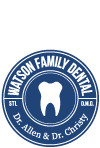Although thorough brushing and flossing remove most food particles and bacteria from easy to reach tooth surfaces, they do not reach the deep grooves on chewing surfaces of teeth. More than 75 percent of dental decay begins in these deep grooves (called pits and fissures). Toothbrush bristles are too large to possibly fit and clean most of these areas. This is where sealants play an important role.
A sealant is a thin plastic coating that covers and protects the chewing surfaces of molars, premolars, and any deep grooves or pits on teeth. Sealant material forms a protective, smooth barrier covering natural depressions and grooves in the teeth, making it much easier to clean and help keep these areas free of decay.
Who may need sealants?
Children and teenagers – As soon as the six-year molars (the first permanent back teeth) appear or any time throughout the cavity prone years of 6-16.
Infants – Baby teeth are occasionally sealed if the teeth have deep grooves and the child is cavity prone.
Adults – Tooth surfaces without decay that have deep grooves or depressions that are difficult to clean.
Sealants are applied by Dr. Christy and the process only takes minutes per tooth. After the chewing surfaces are roughened with an acid solution that helps the sealant adhere to the tooth, the sealant material is “painted” onto the tooth surface, where it hardens and bonds to the teeth. Sometimes a special light will be used to help the sealant material harden.
After sealant treatment, it’s important to avoid chewing on ice cubes, hard candy, popcorn kernels, or any hard or sticky foods. Your sealants will be checked for wear and chipping at your regular dental check-up.
Combined with good home care, a proper diet, and regular dental check-ups, sealants are very effective in helping prevent tooth decay.


Leave A Comment